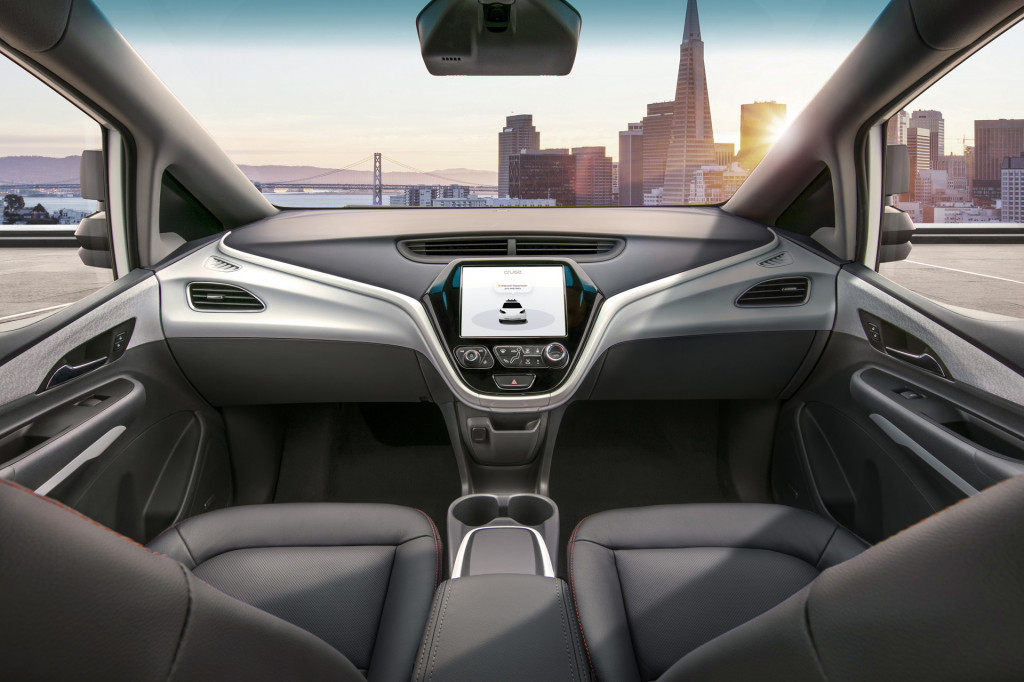- A self-driving car with no steering wheel or pedals from GM isn't arriving as originally intended
- The project will no longer use the Origin shuttle
- GM plans to use a production version of the next-gen Bolt EV due in 2025, it might have a steering wheel and pedals
General Motors' Cruise self-driving technology company will no longer use the Origin shuttle for its robotaxi fleet, Reuters reported on Tuesday, citing a statement made by the automaker.
Instead, Cruise will use a next-generation version of the Chevrolet Bolt EV that's due in 2025, meaning GM has abandoned plans to put a vehicle without a steering wheel and pedals on the road, at least for the time being.
Using a regular production model with steering wheels and pedals will save costs and avoid regulatory issues associated with getting a vehicle like the Origin approved for road use, GM said in its statement to Reuters.
The automaker in 2022 petitioned the NHTSA for permission to deploy up to 2,500 examples of the Origin, though the agency has yet to respond to the request, according to Reuters.

Cruise robotaxi
The Origin, which rides on GM's Ultium EV platform and battery technology set, was first shown in 2020, and a few examples have been built. Some prototype examples were spied testing in 2022.
Reuters reported that plans for the Origin are on hold indefinitely and that it isn't clear whether GM will use the shuttle in the future.
Cruise used the current Bolt EV for development purposes, and the compact electric crossover is still the sole vehicle in Cruise's robotaxi fleet. GM also showed a version of the current Bolt EV without a steering wheel and pedals as early as 2018.

General Motors' Cruise AV self-driving car has no steering wheel or pedals
Cruise was one of the more promising companies in the robotaxi race, with services underway in multiple cities. However, a crash in San Francisco last October involving one of the robotaxis led to the fleet being parked nationwide. Since May, Cruise has slowly resumed services in Phoenix and Dallas, but with a safety driver behind the wheel.
Cruise has been under extra scrutiny since the crash, in which a female pedestrian was thrown into the path of one of its robotaxis after she was hit by another vehicle in the adjacent lane. The driver of the other non-Cruise vehicle fled the scene.
Cruise's robotaxi braked hard to avoid the impact but still came into contact with the pedestrian. Following an initial stop, the robotaxi then continued for another 20 feet in an attempt to pull over, which Cruise said was done to avoid further road safety issues. However, the maneuver resulted in the robotaxi dragging the pedestrian.
